Session Data
- Date: 05/09/2023
- Time: 21:18 – 03:07 UT
- Seeing: II. Good – Slight
- Transparency: III. Clear with slight haze
- Temp: 17.1C,
- Air Pressure: 1019mb,
- Humidity: 94%,
- Dew Point: 16.1C,
- Wind Speed: 5mph
- SQM: 18.77
Scope: Altair 250mm RC f/5.3 Camera: ZWO ASI 183MM Pro, No Filter. Dark subtracted and Flat fielded.
Session Notes:
Started this session with the scope in f/8 mode in the hope of doing some EAA while I wait for the Moon to come up. However the stars looked pretty horrible, so something must be out of kilter. That’s a bit of a bummer as in f/5.3 mode the collimation is spot on. I put the scope back into f/5.3 mode as this is where the scope spends most of its time.
Conditions deteriorating at little at 00:11UT
Seems to be going through periods of quite thick mist at 01:05 UT
At 01:24 UT the skies have cleared again.
NGC6720, M57 & IC1296
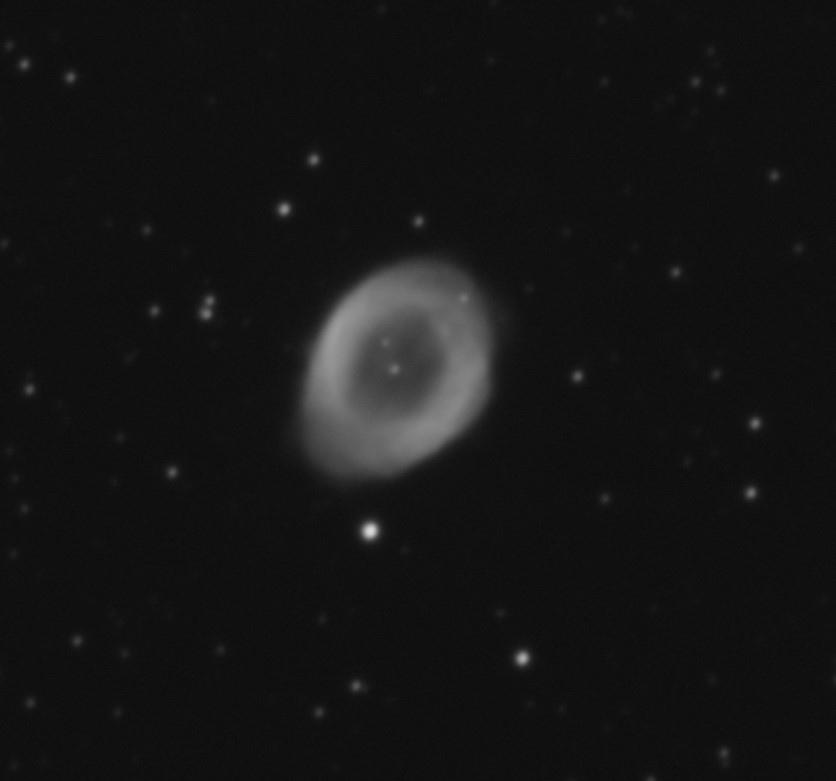
I’m observing this as M57
Going to stop at 22 x30 sec stacked subs. Frame rotation is 277 degrees and North is just past the 9 o’clock.
If I back off the mids you can just start to see the structure within the ring. The central star as well as one to the NW 30 arc/secs away are visible.
While the main ring is thick and oval, within it is a slightly brighter one that is round or certainly less oval.
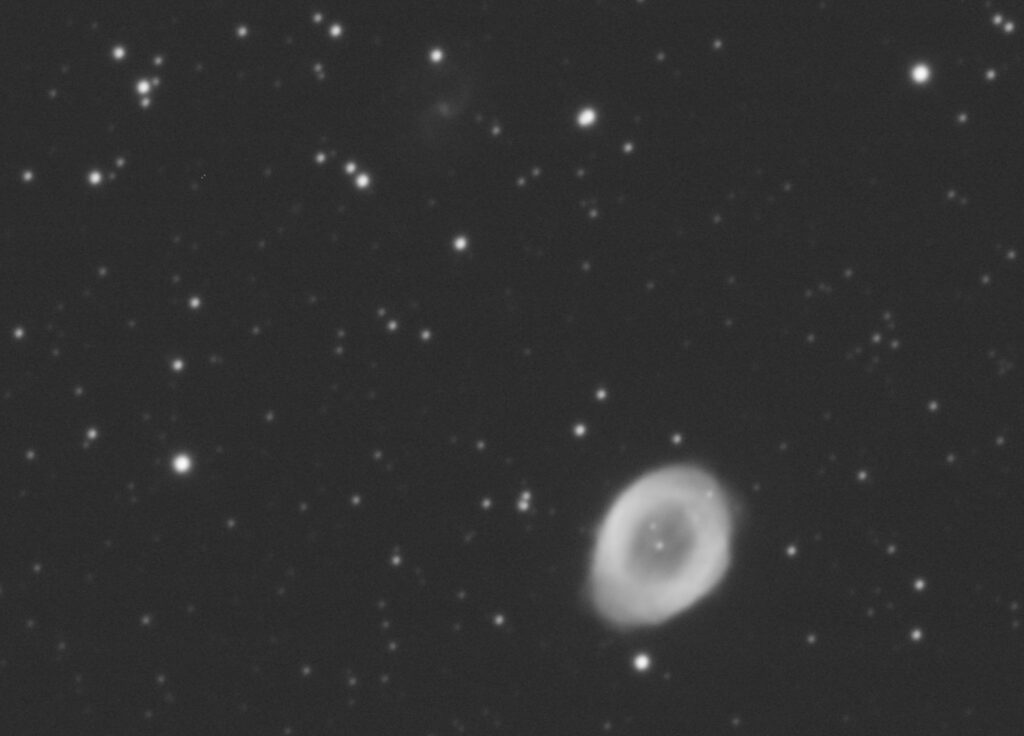
4 arc/min to the NW is the 15th mag galaxy IC 1296. Without looking this up, I would say it’s a barred spiral with just two arms. This proved correct on reading up on it later. (Apparently, the view of a Planetary Nebula and a Galaxy in the same part of the sky is quite rare because the planetaries are found along the disk of our galaxy in amongst where the majority of the obscuring dust lies from our perspective. This usually obscures our view any far away galaxies that lie beyond.)
NGC6946, Caldwell 12
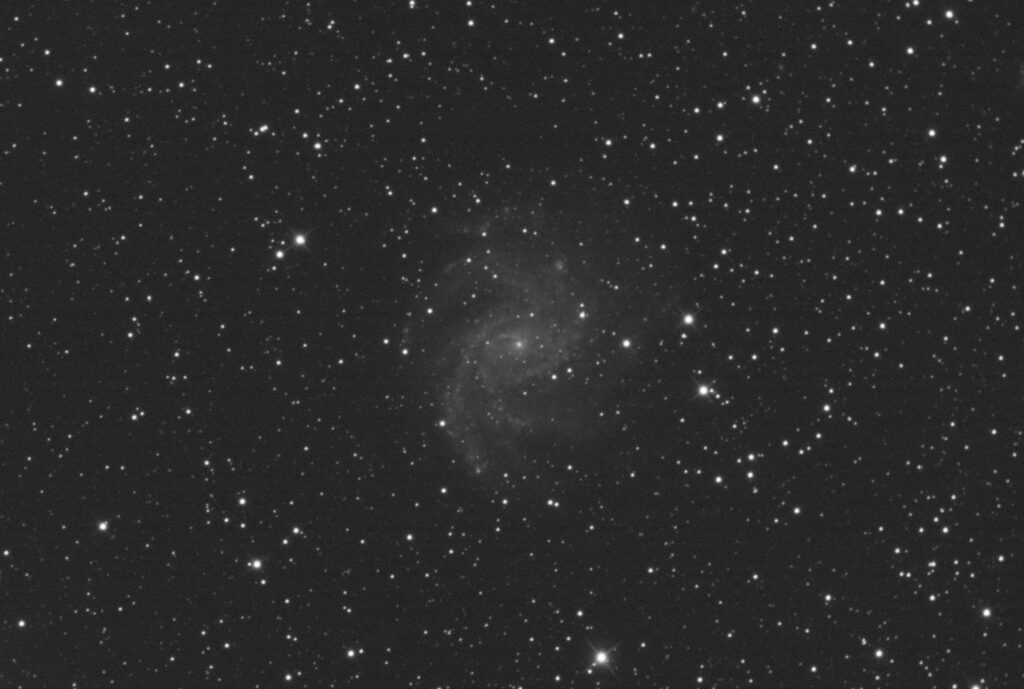
This is being observed as Caldwell 12. Rotation is 277 degrees. Taking 30 second stacked subs.
From the first frame, this galaxy is obvious. A very bright stellar core. After about 7 minutes you can see the pair of double arms coming out at opposite sides. However, heading off to the SE there looks to be a very faint arm splitting off one of the pair to the west.
After 9 minutes you start to see structure of star forming regions within the arms – all clumping into little groups. This little puppy is known for being a prodigious former of supernovae.
There is a clumping of material forming a ball shape located at RA 20:34:32 – DEC +60:08:14.
(Subsequent reading on this suggest that this is a 2000 light year wide cluster of young hot stars, formed due to the collapse of a large amount of gas within the spiral arm. )
NGC7023, Caldwell 4
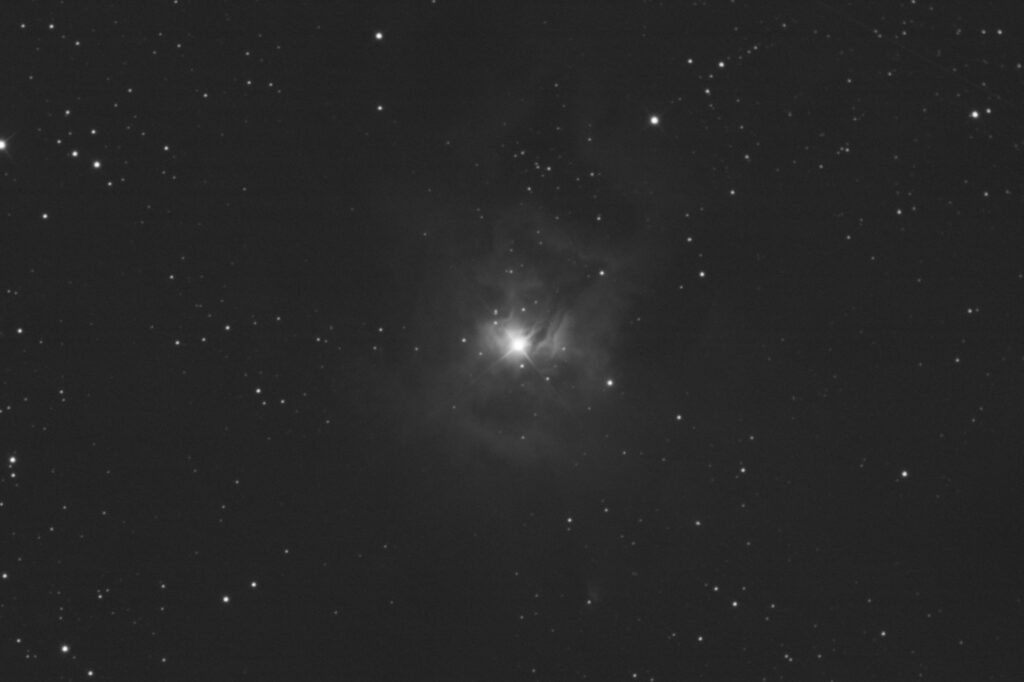
This is being observed as Caldwell 4. Frame rotation is 277 degrees and North is just past the 9 o’clock.
This looks just like a snap dragon flower. A bright 7th mag variable star V0380Cep at its centre seems to illuminate the delicate folds of the gas and dust behind it. I’ll need to see if the star and the nebula behind it are at a similar distance. ( V380 Cep and the nebula are 1300- 1400 ly distant)
There is a hollow void in the nebula to the West. I assume it is a void with stars showing through it rather than a dark nebula like structure with stars in front. The nebulosity extends all the way to the frame in the West and has a width of about 16 arc/mins North to South.
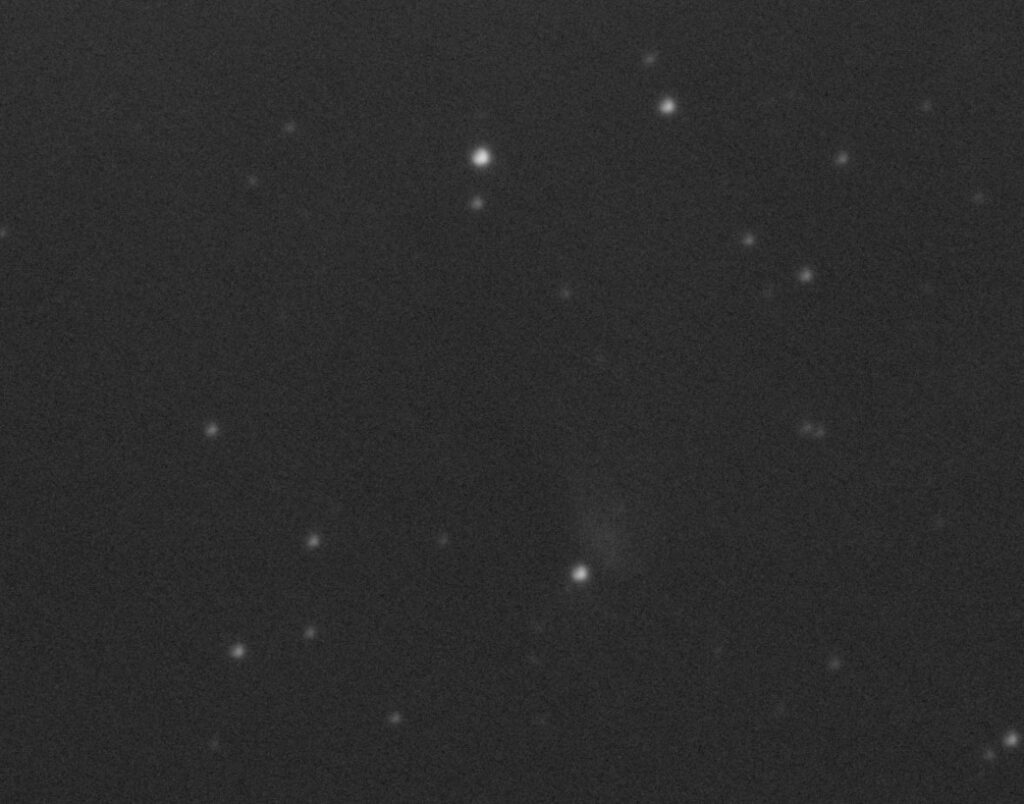
If you look down to the East at 21: 02 57.89 +68° 06 22.0 there appears to be a star and a fan shaped area of nebulosity. ( This is confirmed as reflection nebula GN 21.02.4.02)
NGC 7479, Caldwell 44
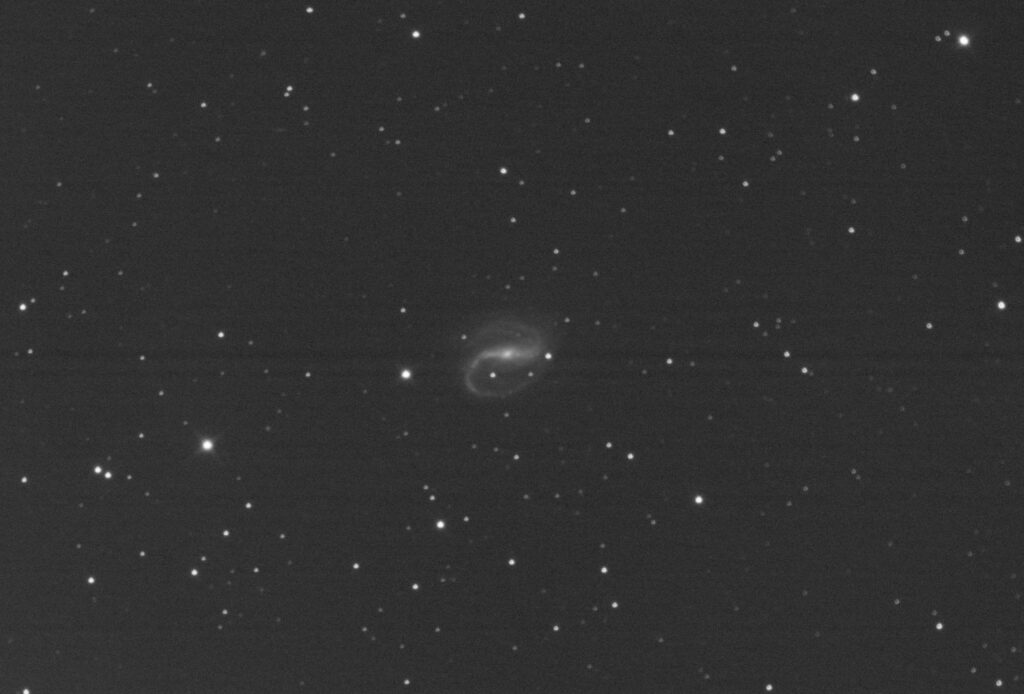
This is being observed as Caldwell 44. Frame rotation 277 degrees and North to the 3:30 o’clock.
An mirrored ‘S’ galaxy about 5 arc/mins in diameter. The bottom tail at the West is sharp and distinctive, where the Easterly one blurs into what looks like a little nebulosity. It might even split into two strands about half way along its length.
Getting really hazy at 00:11 UT, so will probably stop for a while and prepare to image the Moon.
NGC7662, Caldwell 22
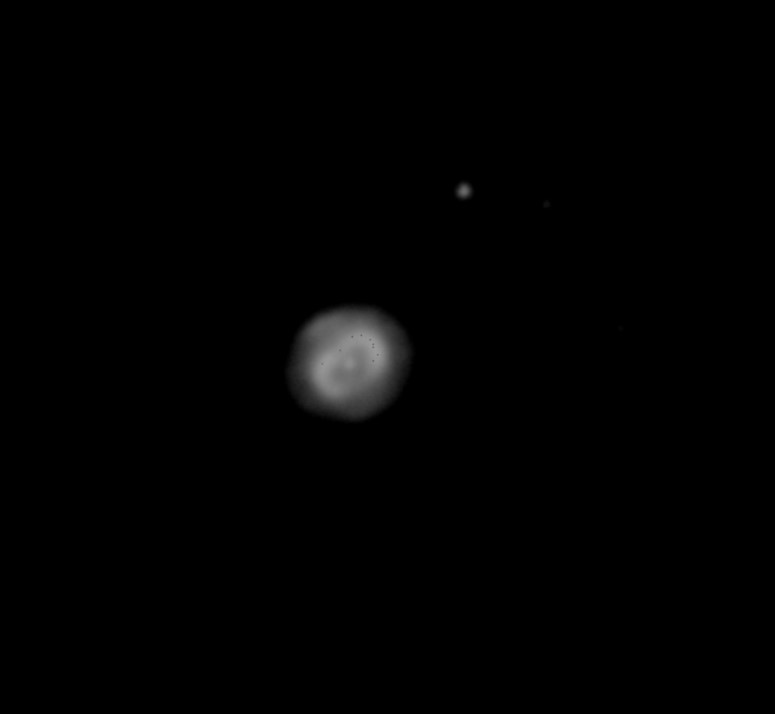
This is being observed as Caldwell 22
Frame rotation 263 degrees with North to the 2:30 o’clock. The skies have cleared again at 00:53 UT
A really tiny planetary nebula. There is a central core and an inner ring that looks like a rectangle with rounded corners. This is surrounded by an outer shell that is slightly oval. The Eastern edge of the outer ring is a brighter. I couldn’t see the two jet like protrusions that are seen in the Hubble image.
NGC 7640
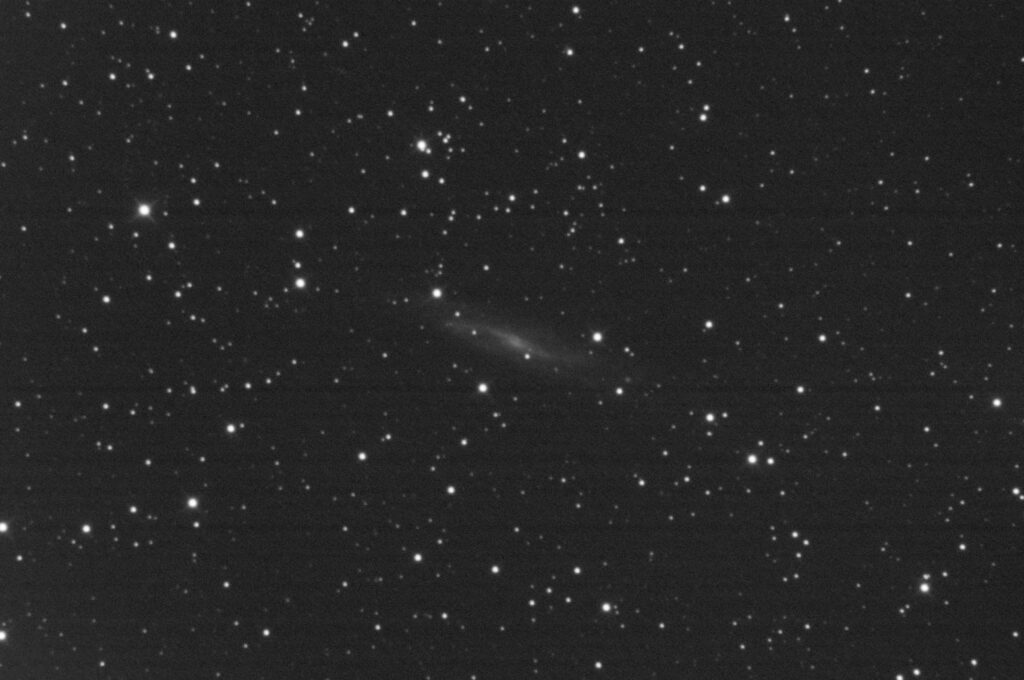
This is being observed as NGC 7640. Frame rotation is 263 degrees.
At two minutes you can just make out the elongated core area and roughly aligned from the centre towards NNE
After 5 mins more of the galaxy is becoming visible with a length of 5.2 arc/min. The core area is more pronounced and you can see a little of the detail within that area now.
At 7 mins you can start to see the arms that are now looking like a very squashed ‘S’ along its length.
At 11 minutes the structure now looks asymmetric with the longer and more prominent arm along the NNE side of the core.
This gentle revealing of detail as the stack builds up is just like what happens when you are at the eyepiece. The more you stare at a faint object, the more you see.
L66 – Hadley Rille
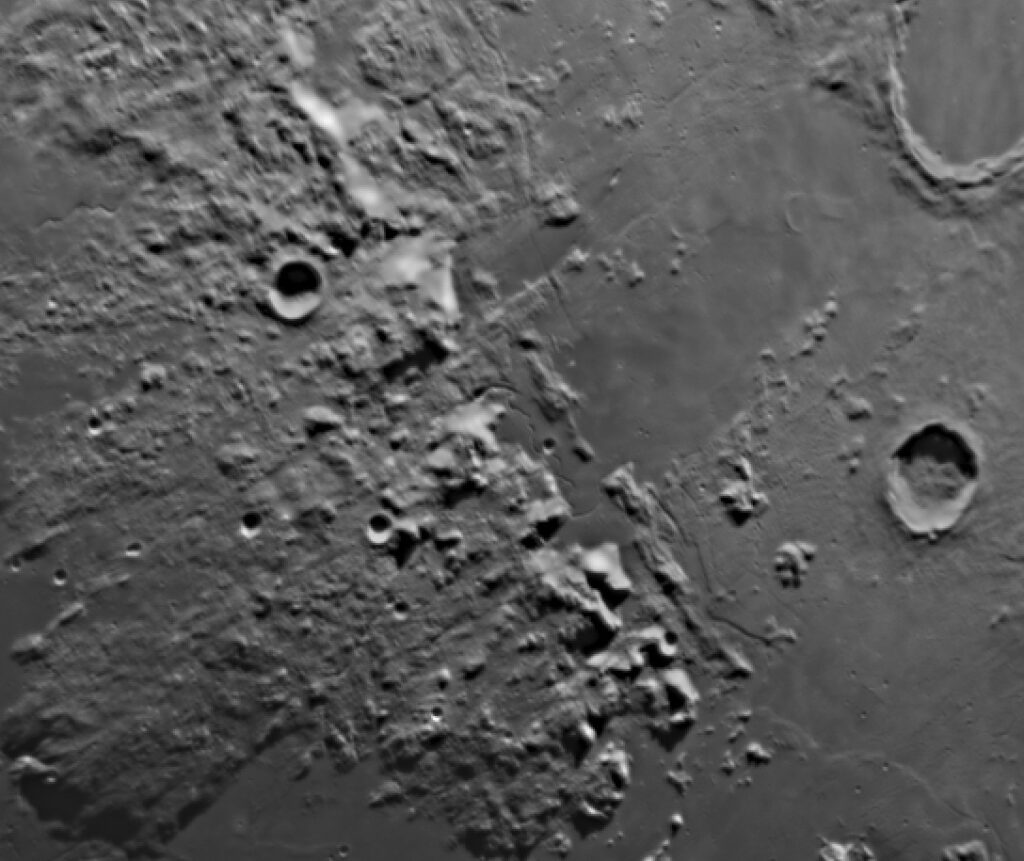
I can make out the crater Hadley C that marks the middle of the Rille, but the rille itself is barely visible and then only at 180%. I can make out the northern part that curves to the West towards Jomo and the loop formed to the south of Hadley C then then heads East.
In the immediate vicinity is the Palus Putrendinis, a rectangular very flat area located between Archimedes and Montes Apenninus. It seems parallel sided with a curved Eastern end and the surface is darker than the surrounding area.
This all changes when you process the best 15% of a 10000 frame capture as shown above. At 200% all of the rille becomes visible except for the most southern part that runs along an E/W straight cliff edge.
L47 – Alphonsus Dark Spots
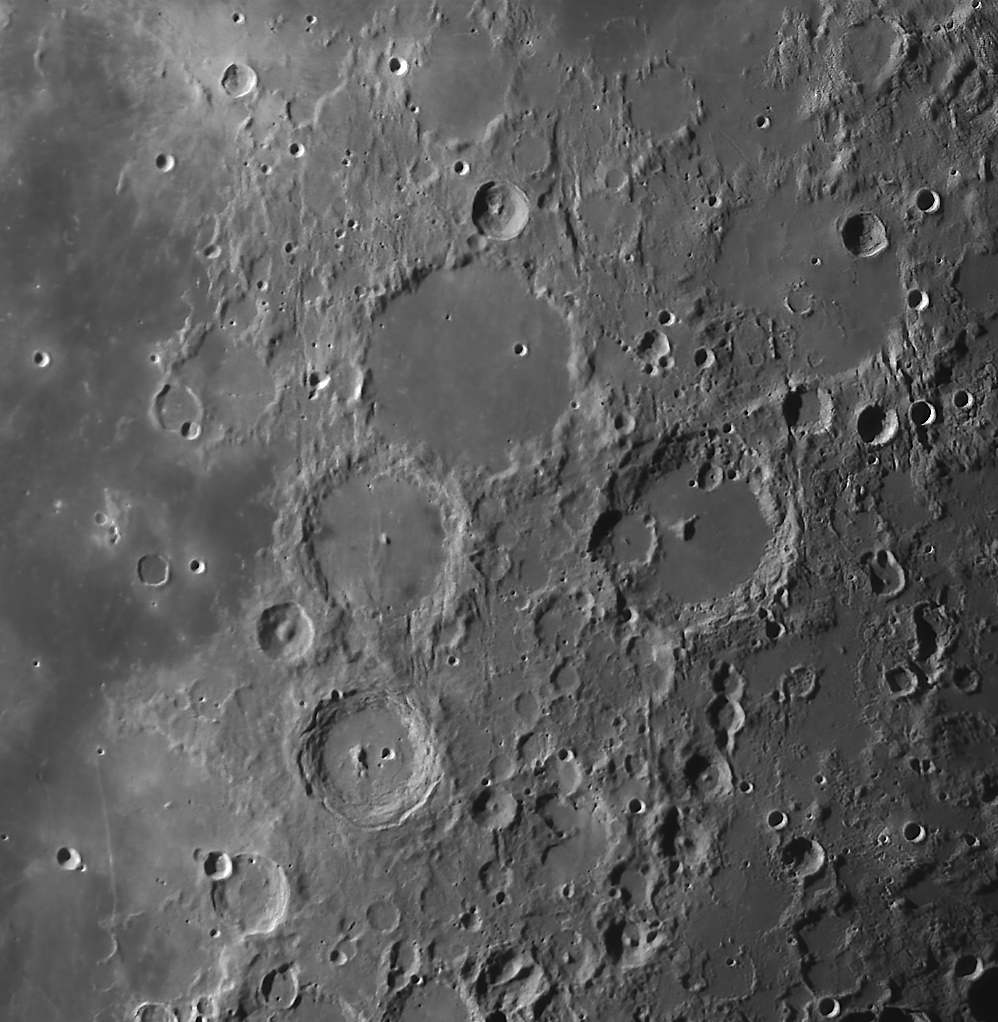
This was a 3000-frame stack image with an in capture 1280 x 1024 pixel crop of my ASI 183 sensor. This gave a frame rate of just over 13 FPS and took 228 seconds to complete.
This crater is known for its ‘Dark Haloed’ craters. These are dark spots formed by the release of dark volcanic material from below, spreading over the much lighter material of the surface. These are called LPD’s or Lunar Pyroclastic Deposits.
The image shows 5 dark spots that you can see on LRO images. I can see two parallel lines running N/S just to the left West of the central peak, but the rille to the East in LRO is completely invisible in my image.
I can just make out 6 of the small craterlets within the crater basin. Of these, there is Alphonsus A, Alphonsus Y, Alphonsus J, Alphonsus G, Alphonsus L.
The terraces look quite worn. is this due to collapse? There also appears to be a very wide breach in the Southern wall, like there has been a breach of lava.
It is famous for the probe Ranger 9 which was launched on 21st March 1965 at 21.37(UT) from Cape Kennedy. It took 5814 pictures of the moon’s surface before crashing into Alphonsus on the 24th March 1965 at 14.08.